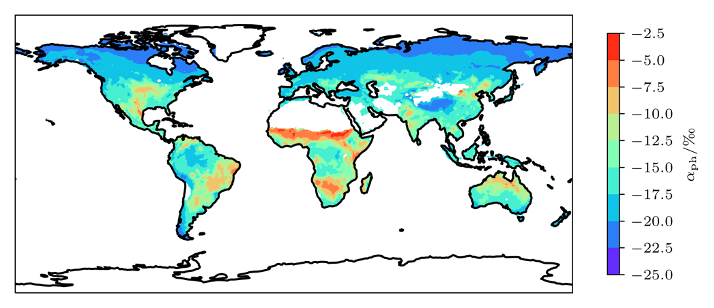CarbonTracker Long-window for Multi-tracer Data Assimilation
J. Hooghiem1, J.B. Miller2, A. Kaushik3,2, S. Michel4, D. Munro3,2, X. Lan3,2, A.E. Andrews2, A. van der Woude5,1, A. van den Berg1, L. Florentie1, G. Koren1, R.D. Kok1, I. van der Laan-Luijkx1 and W. Peters1
1Wageningen University, Department of Meteorology and Air Quality, Wageningen, The Netherlands; +316 27476622, E-mail: joram.hooghiem@wur.nl
2NOAA Global Monitoring Laboratory (GML), Boulder, CO 80305
3Cooperative Institute for Research in Environmental Sciences (CIRES), University of Colorado, Boulder, CO 80309
4Institute of Arctic and Alpine Research (INSTAAR), University of Colorado, Boulder, CO 80309
5University of Groningen, Centre for Isotope Research, Groningen, Netherlands
Joint assimilation of atmospheric carbon dioxide mole fractions along with isotopic ratios of 13C/12C (denoted δ(13C)) allows for estimation not just of global and regional fluxes of CO2 but also information on the sensitivity to drought of terrestrial ecosystem CO2 uptake. In particular, atmospheric δ(13C) observations allow us to optimize the preference plants have for taking up 12CO2 during photosynthesis, i.e., “fractionation”, which is a sensitive indicator of water stress (Fig. 1). Our data assimilation system is a new variant of the CarbonTracker family, but constructed to efficiently process multi-decadal CO2 and δ(13C) records and the carbon cycle constraints they provide. Although our new approach is still based on ensembles, TM5 transport modeling is now performed only once for the full multi-decadal time-span and the flux and fractionation optimizations are completed after transport. This contrasts with the existing global CarbonTracker systems (CT-Europe and CT-CO2) that use a repetitive weekly time-stepping approach where optimization is not separated, and where transport is simulated 6 times. Examples of low frequency processes in the carbon cycle that we target are the isotopic disequilibrium fluxes of the oceans and land. Separating the transport and data assimilation steps is also cheaper numerically, and allows quick tests for the influence of the prescribed model-data mismatch, ensemble size, and site selection. We compare the performance of this new system to an ensemble of other global inversion systems, and benchmark it with independent aircraft data for both CO₂ as well as δ(13C). The added value of δ(13C) that we aim to leverage will be shown in a co-optimization of NEE, fractionation, and disequilibrium fluxes.
Figure 1. Optimized annual mean photosynthetic fractionation

